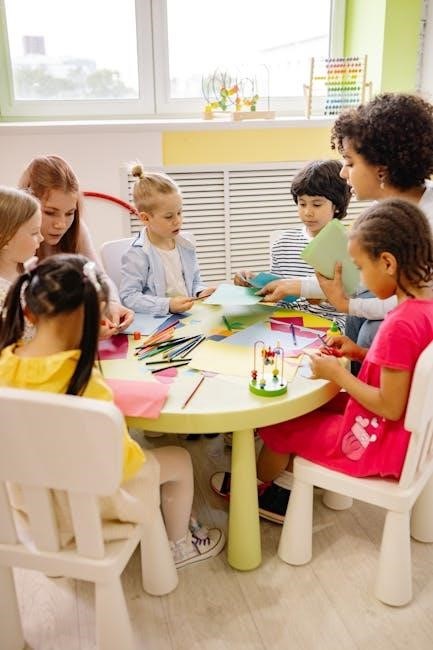A kindergarten graduation speech is a heartwarming milestone, celebrating growth, achievement, and the transition to new adventures․ It empowers young students to express their feelings, memories, and gratitude in a joyful, creative way․
1․1․ Understanding the Significance of Kindergarten Graduation
Kindergarten graduation marks a meaningful milestone in a child’s educational journey, symbolizing their transition from early learning to formal education․ It celebrates their growth, achievements, and readiness for new challenges․ This event is not just a ceremony but a recognition of their development, creativity, and social skills․ For young graduates, it fosters a sense of accomplishment and pride, while for parents and teachers, it highlights the joy of witnessing their progress․ The graduation ceremony serves as a foundation for future academic endeavors, creating lasting memories and inspiring confidence in students as they step into elementary school․
1․2․ The Role of Students in Delivering Graduation Speeches
Delivering a graduation speech empowers kindergarten students to voice their experiences, feelings, and gratitude․ It allows them to reflect on their journey, share memorable moments, and express appreciation to teachers, parents, and peers․ This role helps students build confidence, develop public speaking skills, and feel a sense of accomplishment․ By participating actively in the ceremony, they contribute to the celebration, making it more personal and heartfelt for everyone involved․ The speech also serves as a meaningful way for students to bid farewell to their kindergarten years and embrace the excitement of new adventures ahead․

Structure of a Kindergarten Graduation Speech
A kindergarten graduation speech structure includes greeting, memories, gratitude, and closing remarks․ It is simple, heartfelt, and tailored to reflect the student’s experiences and feelings․
2․1․ Greeting and Opening Remarks
The greeting and opening remarks set the tone for the speech, introducing the student and welcoming the audience․ A simple “Good morning” or “Hello, everyone” is a great start․ Students can express excitement about the occasion, such as, “Today is a very special day because we’re graduating from kindergarten!” This section should be brief, friendly, and engaging, making the audience feel welcomed and enthusiastic․ It’s important to keep the language simple and age-appropriate, ensuring the young speaker feels confident and comfortable․ The opening remarks should reflect the student’s personality and joy, setting a positive tone for the rest of the speech․
2․2․ Acknowledging Teachers, Parents, and Peers
In this section, students express gratitude to the people who supported them throughout their kindergarten journey․ They can thank teachers for their guidance, parents for their encouragement, and friends for their companionship․ Phrases like, “I want to thank my teacher for helping me learn and grow,” or “Thank you to my parents for always supporting me,” are heartfelt and sincere․ Acknowledging peers by saying, “I’m lucky to have such wonderful friends,” fosters a sense of unity and appreciation․ This part of the speech emphasizes the importance of teamwork, love, and support, making it a meaningful way to recognize everyone’s role in their success․
2․3․ Reflecting on Kindergarten Memories
This part of the speech allows students to share their favorite kindergarten experiences, such as playing with friends, learning new skills, or participating in fun activities․ They can mention specific memories, like “I loved painting in art class” or “I’ll never forget our field trip to the zoo․” Reflecting on these moments highlights growth and cherished times․ It’s important to keep the tone light and heartfelt, allowing the audience to connect emotionally․ By sharing these memories, students celebrate their journey and the friendships that made kindergarten special․ This section makes the speech personal and meaningful, showing how much they’ve learned and enjoyed along the way․
2․4․ Expressing Gratitude and Appreciation
In this section, students express their heartfelt thanks to teachers, parents, and friends who supported them throughout their kindergarten journey․ They can acknowledge the teachers who guided them, the parents who encouraged them, and the friends who made school fun․ Phrases like “Thank you for teaching us new things” or “I’m grateful for my friends who played with me” work well․ This part of the speech fosters a sense of appreciation and respect, showing how much the students value the people in their lives․ It’s a meaningful way to highlight the importance of teamwork and support in their growth and success during kindergarten․
2․5․ Closing Remarks and Farewell
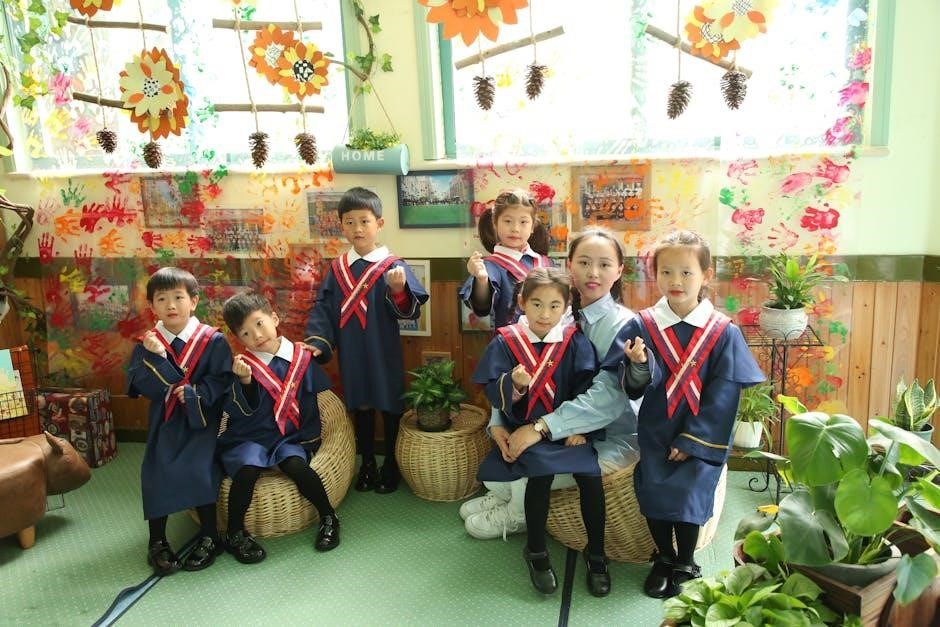
The closing remarks are the final part of the speech, where students bid farewell to their kindergarten journey and express excitement for the future․ They can thank everyone once again for their support and celebrate the memories made․ Phrases like, “Goodbye, kindergarten! Hello, first grade!” or “We’ll always remember the fun times we had together” are perfect for this section․ It’s a heartfelt way to wrap up the speech, leaving the audience with a sense of joy and hope for the adventures ahead․ This conclusion ties everything together, ending on a positive and uplifting note․
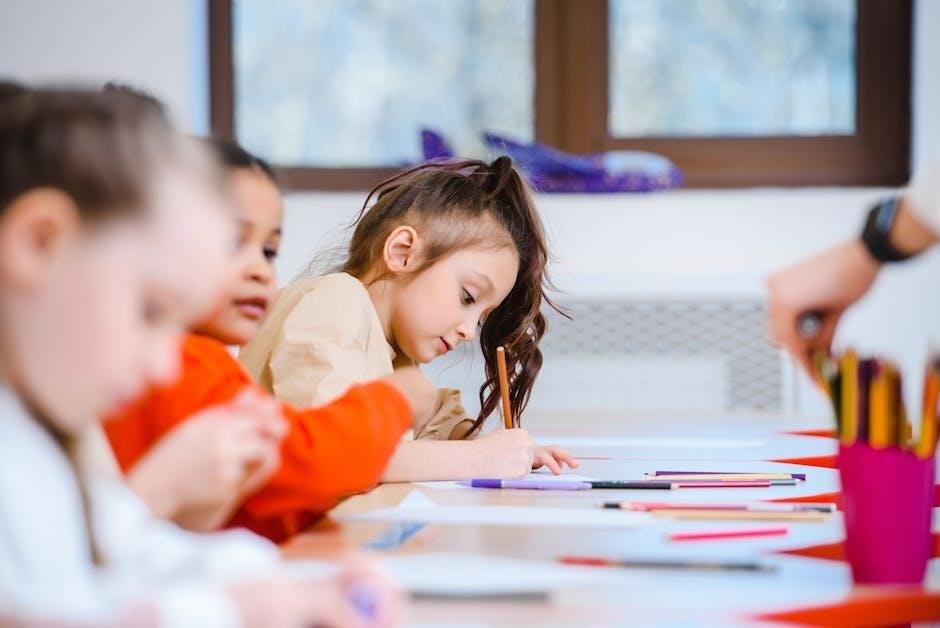
Content and Tone of the Speech
The speech should be simple, heartfelt, and engaging, using age-appropriate language to connect with young children and their audience, reflecting joy and excitement for the milestone․
3․1․ Keeping the Speech Simple and Engaging
Keeping the speech simple and engaging is crucial for kindergarten graduates․ Use short, clear sentences and relatable themes to capture young minds․ Incorporate fun elements like rhymes or questions to keep the audience interested while ensuring the message remains easy to follow․ Avoid complex words or lengthy paragraphs that might confuse or lose the attention of young listeners․ Instead, focus on simplicity and clarity, making the speech enjoyable and memorable for everyone involved․
- Use simple language and relatable themes․
- Incorporate fun elements like rhymes or questions․
- Keep sentences short and easy to understand․
3․2․ Incorporating Personal Experiences and Anecdotes
Incorporating personal experiences and anecdotes makes the speech relatable and heartfelt․ Share a favorite kindergarten memory, like a fun project or a special moment with friends․ For example, you could talk about a time when you learned something new or a funny incident that happened in class․ These stories add a personal touch and make the speech more engaging for both classmates and parents․ Keep the anecdotes simple, age-appropriate, and brief to maintain the audience’s interest․ Encourage students to share their own stories or work with teachers to choose meaningful experiences that reflect their time in kindergarten․
- Share a favorite kindergarten memory or activity․
- Include a funny or heartfelt classroom moment․
- Keep stories brief and age-appropriate․
- Involve teachers to help select meaningful anecdotes․
3․3․ Using Age-Appropriate Language
Using age-appropriate language ensures the speech is clear, relatable, and engaging for young children and their audience․ Kindergartners should use simple words and short sentences to express their thoughts․ Avoid complex vocabulary or concepts that might confuse listeners․ For example, instead of saying “phenomenal,” say “amazing․” This makes the speech more authentic and easier for peers to understand․ Teachers can help simplify phrases while maintaining the child’s unique voice․ Encourage students to use words they are comfortable with and practice pronouncing any unfamiliar terms․ This approach ensures the speech is both heartfelt and accessible to everyone․
- Use simple, clear words and phrases․
- Keep sentences short and easy to understand․
- Practice pronunciation of new or challenging words․
- Teachers can assist in simplifying language while preserving the child’s voice․
Tips for Delivering the Speech
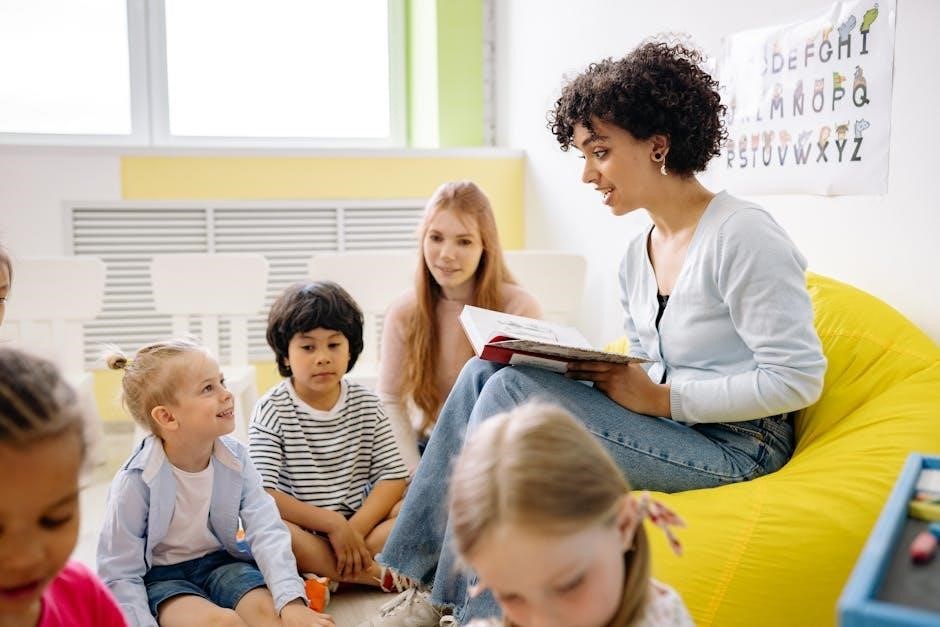
Delivering a kindergarten graduation speech requires confidence, practice, and enthusiasm․ Speak clearly, make eye contact, and engage the audience with a smile․ Practice beforehand to feel prepared and proud․
4․1․ Practicing the Speech Multiple Times

Practicing the speech multiple times is essential for confidence and fluency․ Rehearse in front of family or friends to refine delivery and receive feedback․ Focus on clear enunciation, proper pacing, and maintaining a positive tone․ Practice in the same setting as the graduation to build familiarity with the environment․ Memorize key phrases to avoid relying solely on notes․ The more familiar the student is with the speech, the more natural and engaging the delivery will be․ Regular practice helps reduce nervousness and ensures the message is conveyed effectively․ Encourage students to practice daily, even for short periods, to build confidence and mastery․
4․2․ Managing Nervousness and Stage Fright
Managing nervousness and stage fright is crucial for a confident delivery․ Encourage students to take deep breaths before speaking to calm their nerves․ Remind them that it’s okay to feel nervous and that everyone experiences it․ Positive thinking can help shift focus from fear to excitement․ Suggest visualizing success and receiving applause to boost confidence․ Teach simple relaxation techniques, like squeezing a small comfort object or standing tall with shoulders relaxed․ Reassure them that mistakes are part of learning and not the end of the world․ Emphasize the importance of speaking slowly and clearly, and remind them to look at supportive faces in the audience․ Most importantly, remind them to enjoy the experience and take pride in their achievement․
4․3․ Engaging the Audience with Eye Contact and Smile
Engaging the audience with eye contact and a warm smile is essential for a captivating speech․ Encourage students to scan the room, making brief eye contact with familiar faces like parents, teachers, and friends․ This simple act helps build confidence and connection․ Remind them to smile naturally, as it conveys joy and enthusiasm, making their speech more relatable and heartfelt․ Practicing eye contact during rehearsals can help them feel more comfortable․ Emphasize that smiling is a powerful tool to show pride in their achievement and share their happiness with others․ By doing so, they’ll create a positive and memorable experience for everyone present․

Sample Kindergarten Graduation Speech
Today, we celebrate our achievements and the fun we’ve had․ I’m grateful for amazing teachers, supportive friends, and loving families․ Kindergarten has been a journey of growth, learning, and unforgettable memories․ As we move forward, I’m excited for new adventures․ Thank you all for being part of this special day!
5․1․ Example Speech Outline
- Greeting: Start with a friendly hello to welcome everyone․
- Thanks: Mention teachers, parents, and friends who supported you․
- Memories: Highlight fun moments or activities from kindergarten․
- Future: Talk about what you’re looking forward to in the next grade․
- Closing: End with a cheerful farewell and a smile!
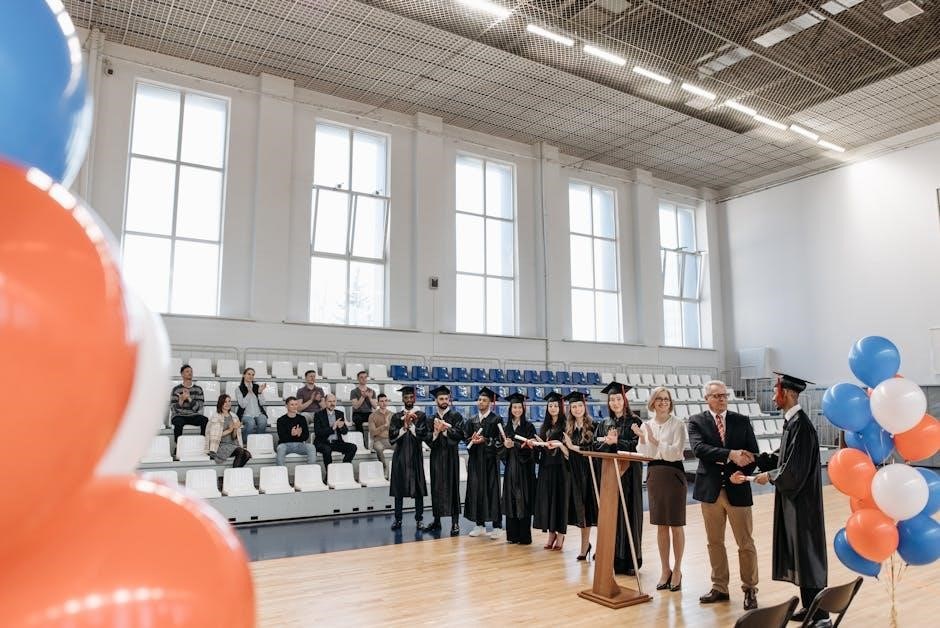
This outline provides a simple structure for students to express their thoughts clearly and confidently during the ceremony․
5․2․ Key Phrases and Sentences to Include
Include phrases like, “Thank you to our amazing teachers,” or “I’m so happy to celebrate with all of you․” Mention memories, such as, “I loved learning to read,” and express excitement for the future with, “I can’t wait for first grade!” Use simple, heartfelt sentences like, “Kindergarten was so much fun,” or “I’ll miss my friends but I’m excited for new adventures․” Ending with, “Goodbye, kindergarten, hello to growing up!” leaves a lasting impression․ These phrases make the speech personal, sincere, and engaging for the audience․
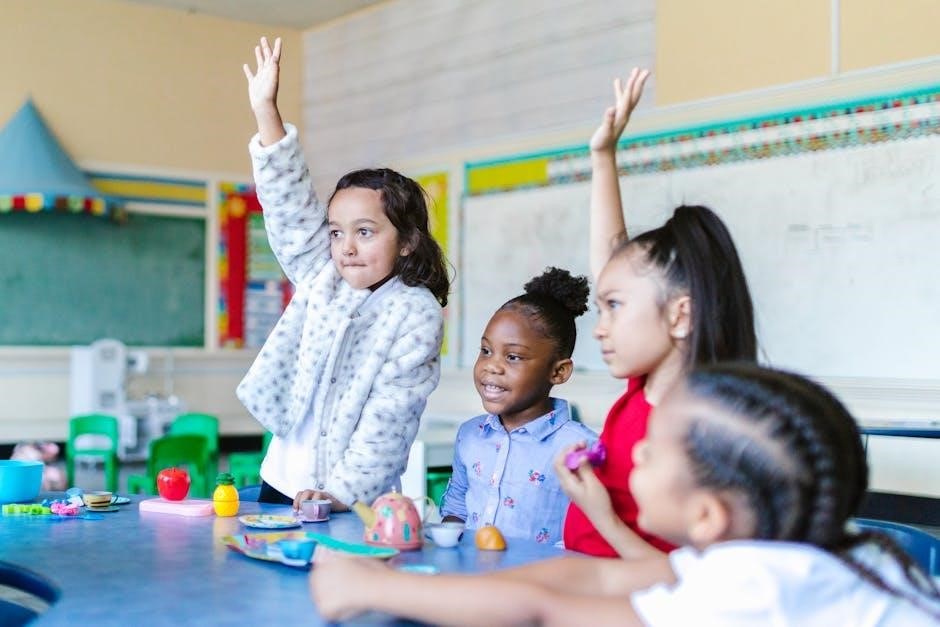
A kindergarten graduation speech celebrates growth, achievements, and cherished memories․ It’s a heartfelt goodbye to a foundational chapter, inspiring students to embrace future opportunities with confidence and joy․
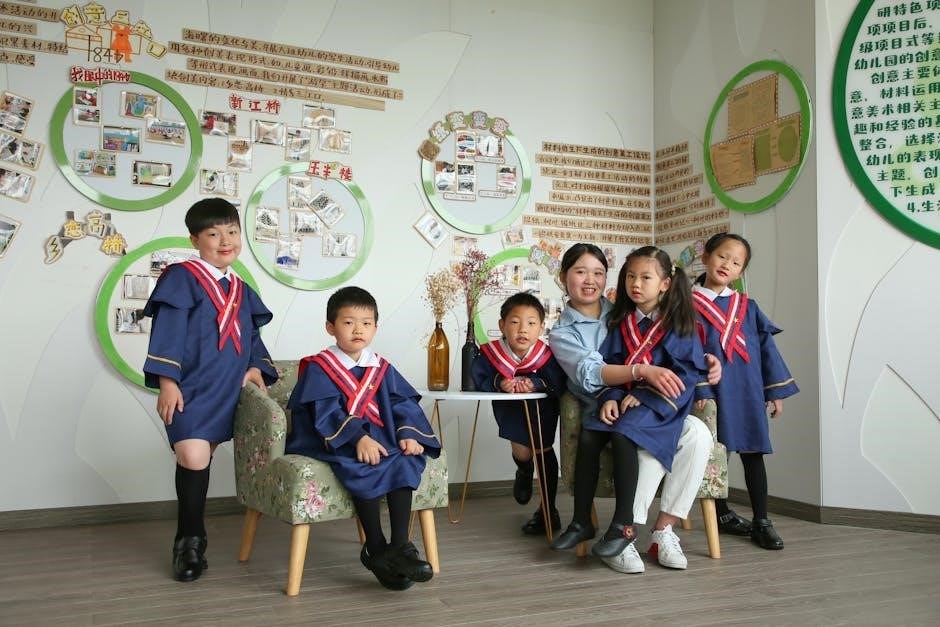
6․1․ Final Thoughts on the Importance of the Speech
A kindergarten graduation speech is more than just a formality—it’s a meaningful milestone that captures the essence of growth, accomplishment, and the joy of moving forward․ It allows students to reflect on their journey, express emotions, and celebrate the people who supported them․ This moment is a celebration of their achievements and a reminder of the memories created during their early educational years․ By delivering a speech, students gain confidence, practice public speaking, and leave with a sense of pride and readiness for future challenges․ It’s a heartfelt farewell to a chapter that laid the foundation for their learning and personal development․
6․2․ Encouraging Students to Embrace the Experience
Kindergarten graduation is a celebration of growth and accomplishment, offering students a chance to shine and reflect on their journey․ Encourage them to view this experience as a stepping stone, building confidence and resilience․ Remind them that it’s okay to feel nervous but important to embrace the moment with pride․ Parents and teachers play a vital role in supporting their confidence, helping them understand the value of this milestone․ By participating, students learn the power of their voice and the joy of sharing their thoughts․ This experience isn’t just about goodbye—it’s about hello to new opportunities and the excitement of what’s next․ Encourage them to cherish the memories and carry the confidence forward as they grow․
